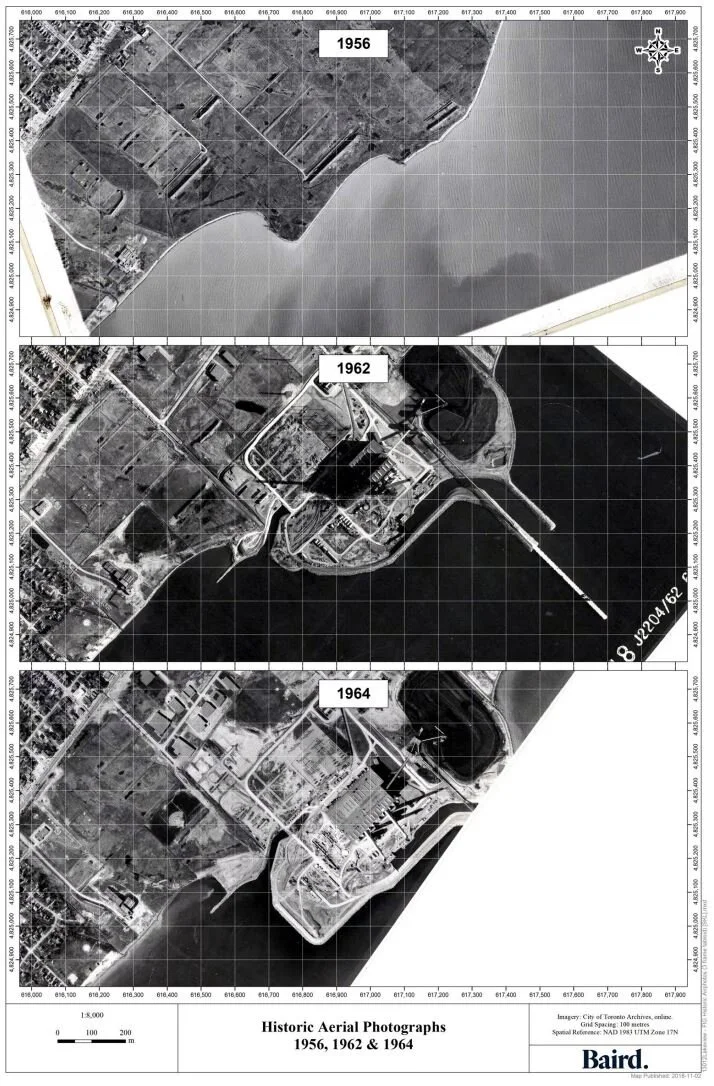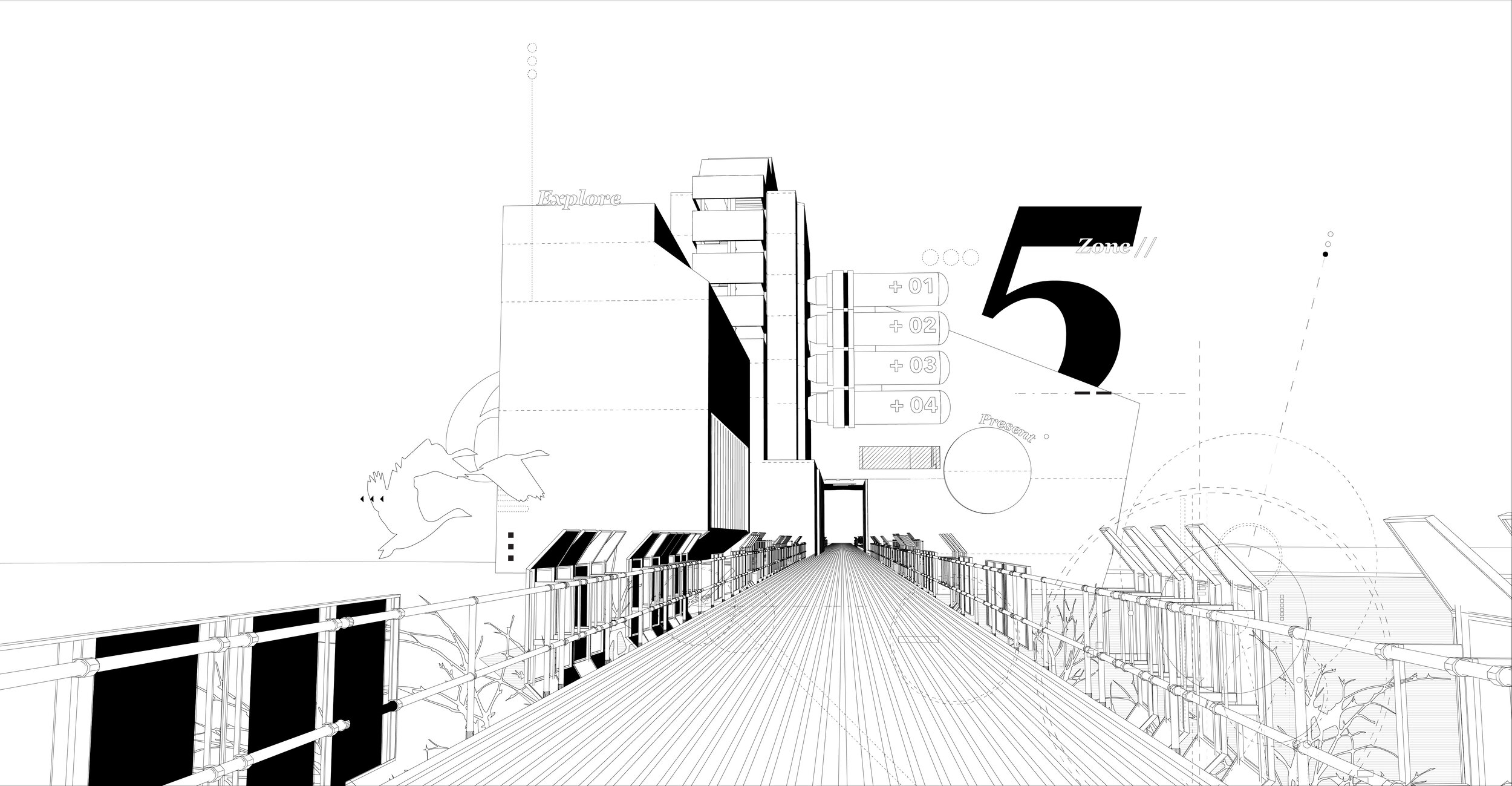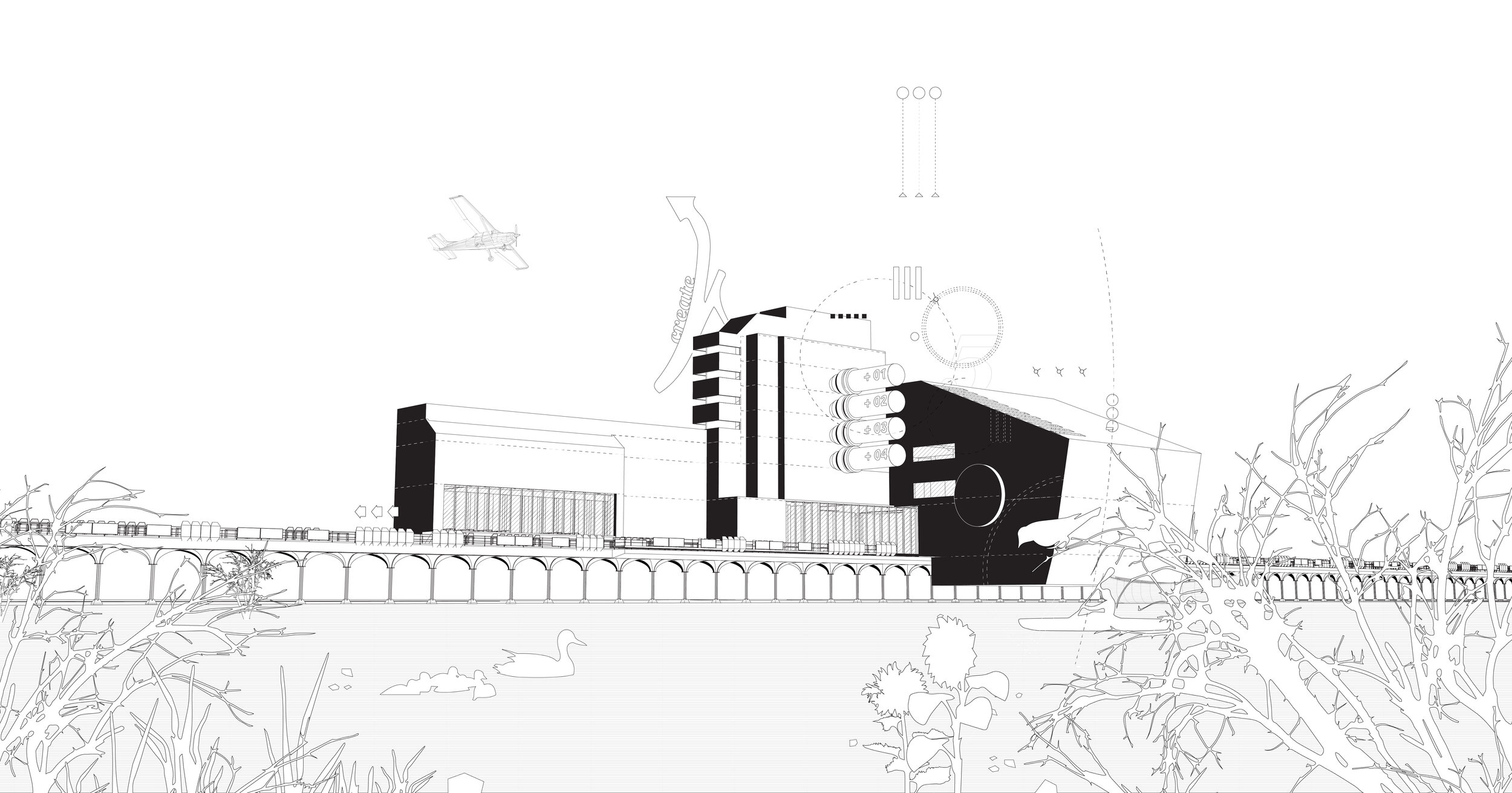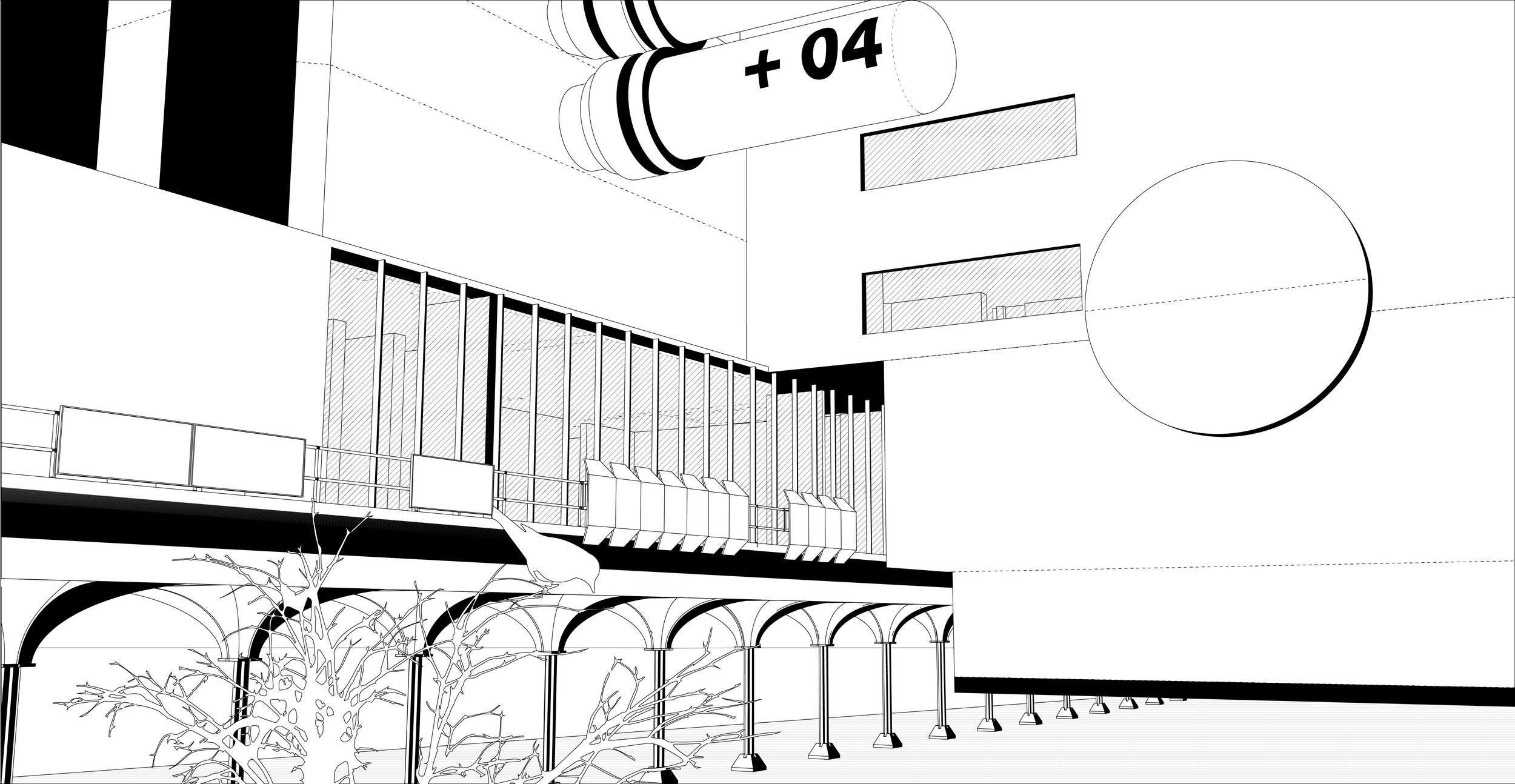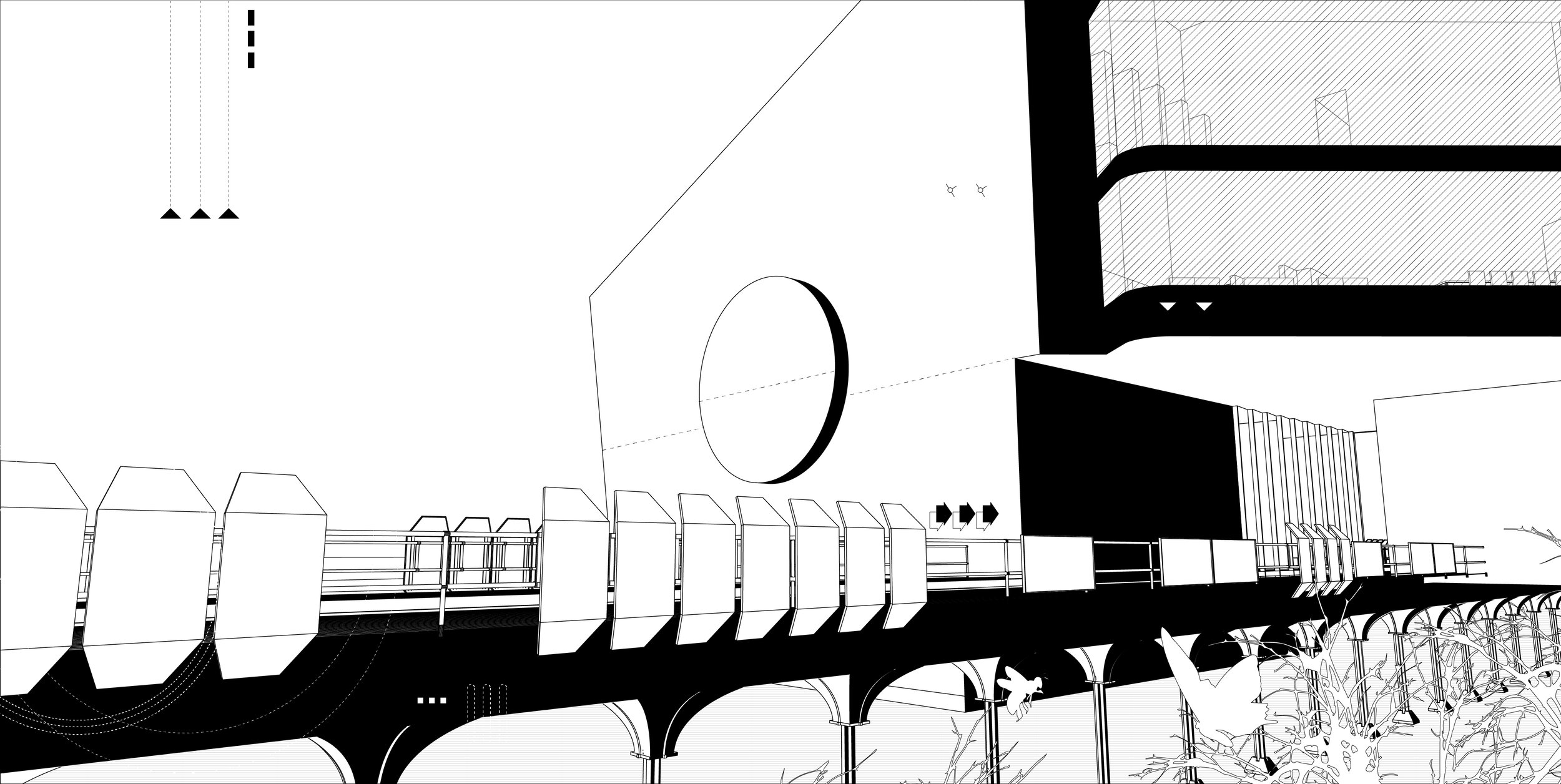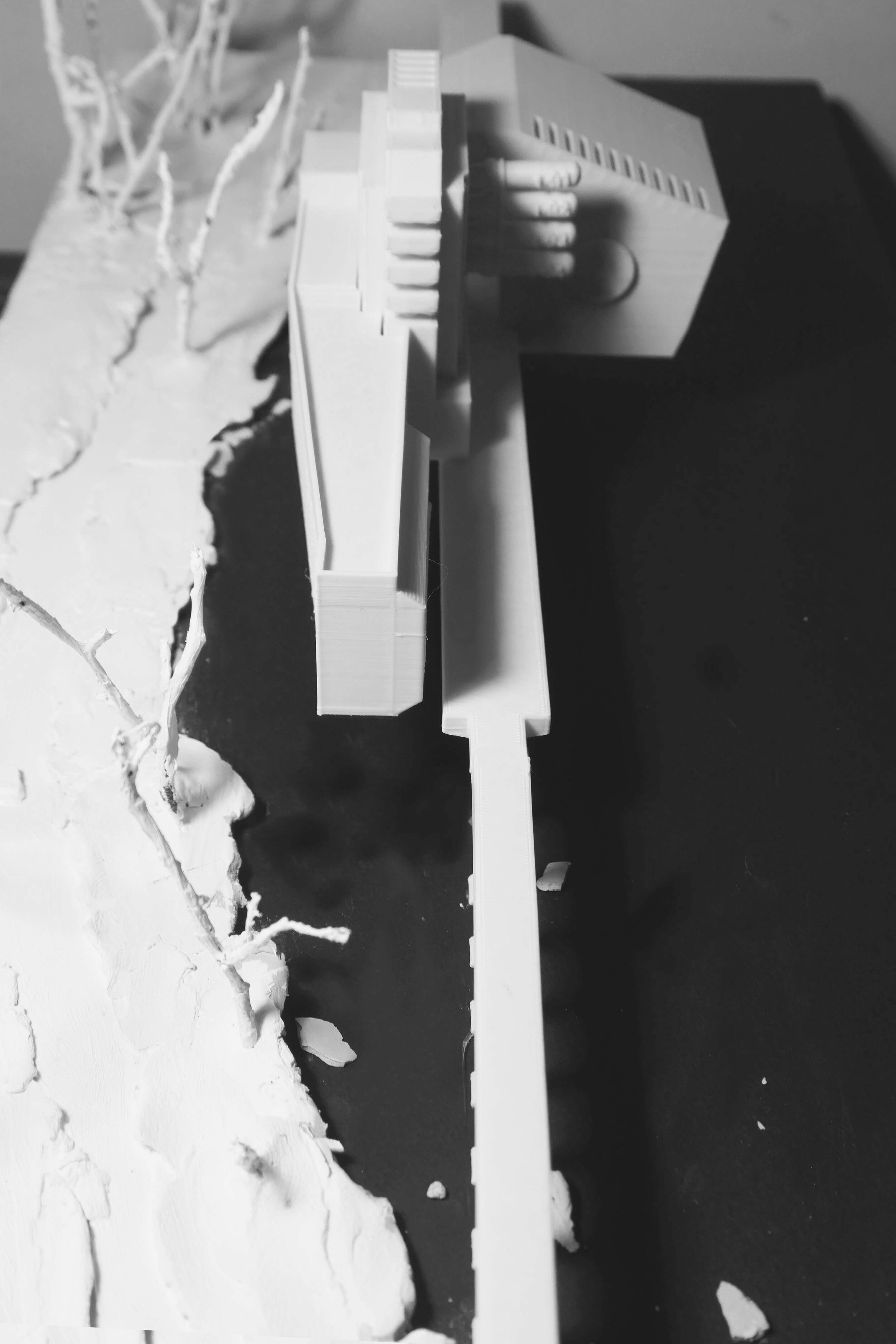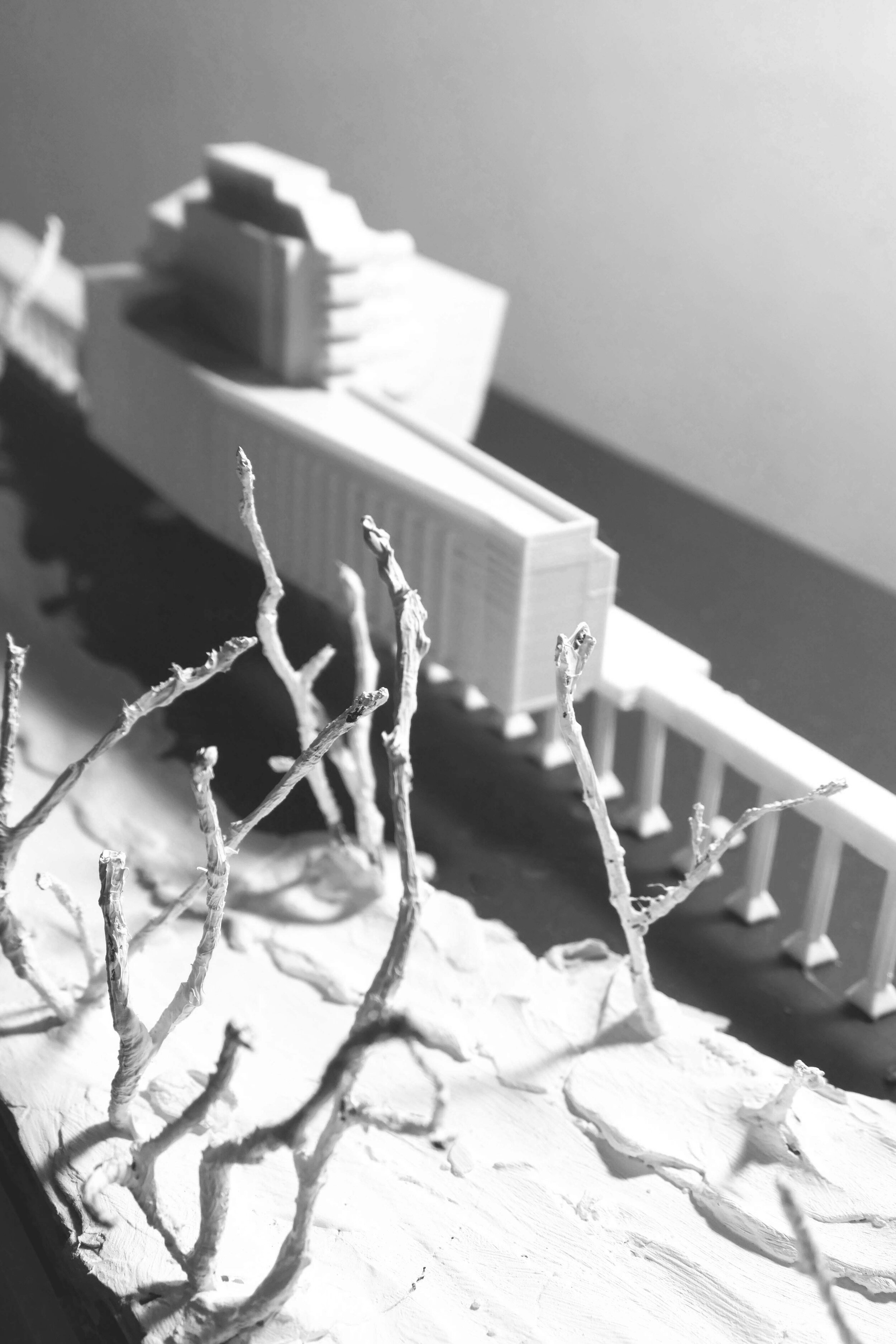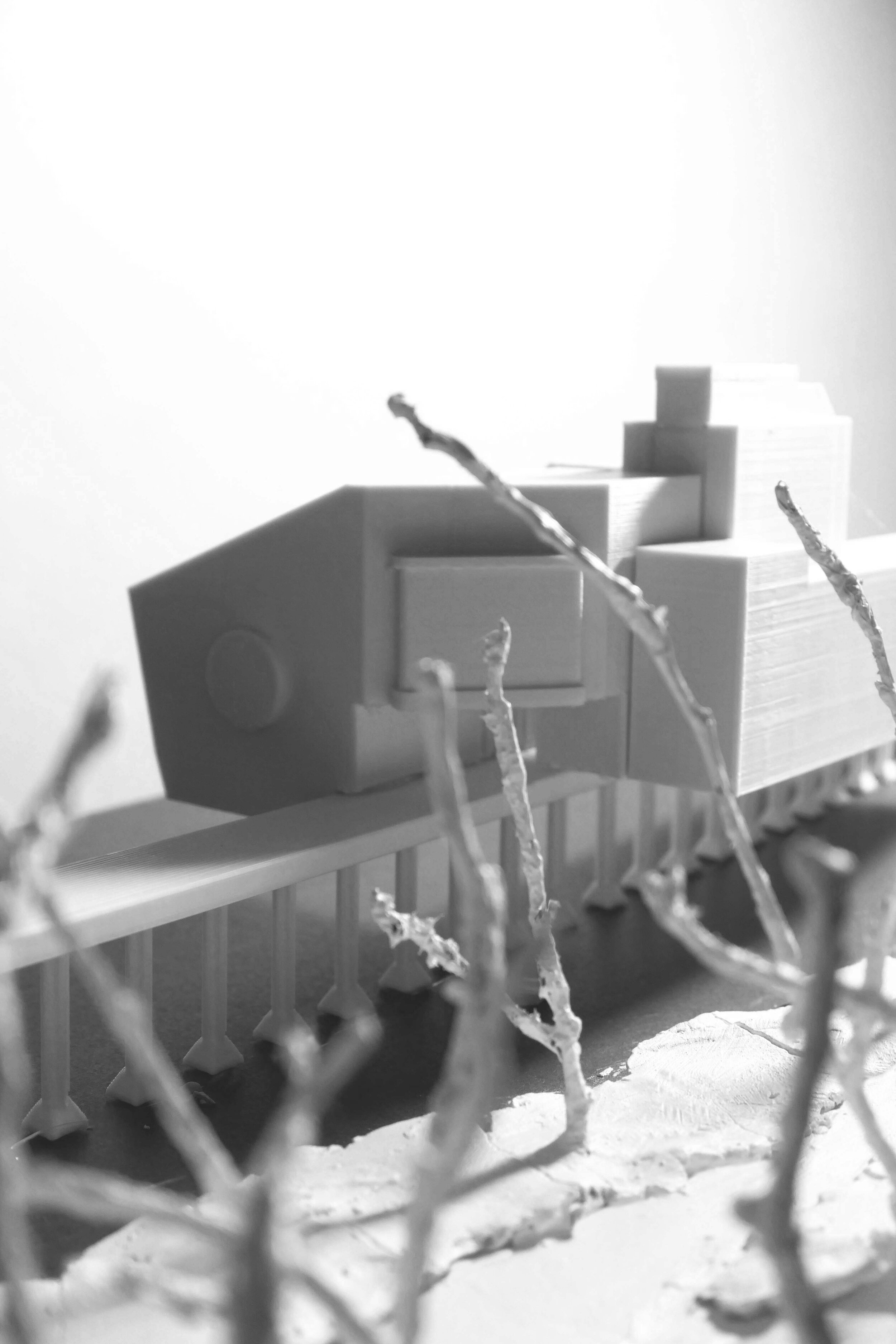Instructor Gilles Saucier, Christian Joakim, Gregory Neudorf
2020 UNIVERSITY OF TORONTO: thesis
Anthropocene and Herd
Imprints and Traces
PROJECT
The Anthropocene can be observed as the current chapter of Earth since humans entered the climate. As humans stepped into nature, layers were added above the existing environment. The notion of nature has been evolved throughout time, and one of the major events that became a marker to Earth was the invention of synthetic materials. Plastic was a revolutionary step for humanity that consisted of numerous possibilities and opportunities from its flexible, durable, and cost-efficient characteristics; however, it did not consist of any natural molecules and became something unmanageable, by being spilled in our environment.
OBJECT
The notion of human imprint has inspired the project to explore further by articulating the previous studies into an object. The intention was to aim the balance of the two contrasting elements: the natural and the artificial. The object is filled with human-made substances that were collected during multiple journeys. The mold that contains these substances is from a natural form - a rock. The natural form represents the existence of nature that was here before humans were introduced to the climate. Ultimately, the object symbolizes a trace or an imprint that resembles an idea of a fossil; however, the object reveals the information inside. This illustrates a metaphor of the idea that mistakes are not simply covered, but are embraced. By combining the two, a new texture and a new pattern emerge.
Historic Aerial Photographs 1956, 1962, 1964
W.F. Baird & Associates Coastal Engineers Ltd. “Lakeview Village Docking Feasibility Study,” February 26, 2019.
Lakeview
The study area is situated near the boundary between Mississauga and Toronto along Lake Ontario. This area has morphed over time as the shoreline has been extended since the mid-1900s. The shoreline’s transformation happened from the event of the coal plant construction. “The Four Sisters,” four 150-meter concrete stacks were in place and served their duty for decades and once used to play a significant role as it produced approximately 17% of the province’s energy needs. Coals and ashes used to pile up on the eastern side; however, as time passed the provincial government confirmed to shut down its service. Finally, “The Four Sisters” were removed with the rest of the powerhouse building in 2007 while having thousands of spectators seeing the demolition. What is left is an artificial shoreline in the area and it is hard to tell that there was a power plant in the past as it seems like it never existed
architectural proposal
Where the coal plant used to be placed is now a field of sunflowers, that is cleaning the toxins left in the contaminated soil. The conservation area is planned to be developed neighboring the study area to bring wildlife back as before. The architectural form follows the idea built upon the previous studies. The root of the form is an accumulation of found objects and further reinterpreted into an architectural structure. The surrounding landscape is speculated to offer a space for plants, humans, animals, insects, and aquatic life to coexist together. The proposed trail continues to the existing waterfront track allowing visitors to continue their journey. The site conditions had exciting possibilities, and a number of potential were seen. Building up from the earlier studies and interests, the target goal of this thesis aims to offer environmental awareness. This proposal imagines a space where ideas can grow and expand, and ultimately serve something back to the city with positive energies. Sometimes we are less conscious of our actions, and this thesis aims to bring up our misbehavior and opening up conversations amongst this event to the public.


